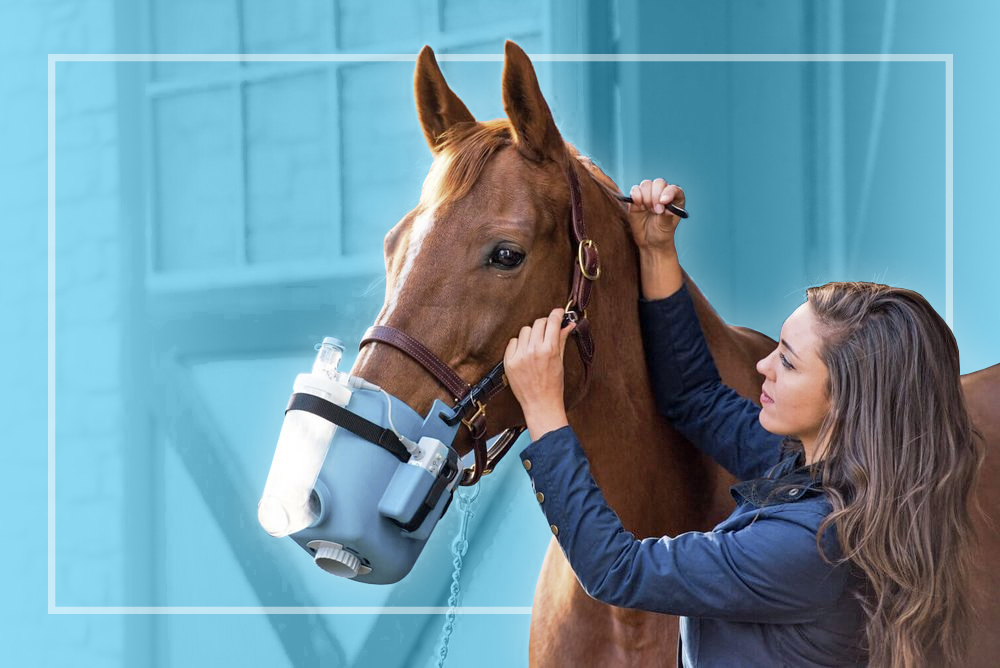By Stephanie Davis, DVM
Associate at Clarke Equine: Three-Day Eventer;
Barn Manager - Clover House, VA
There are entire text books dedicated to the topic of the equine respiratory system. So, to start, we are going to try to discuss the main structures and briefly discuss the most common clinical manifestations of the respiratory system. Although very basic, it is necessary to keep in mind that the main function of the airway system is to deliver oxygen and remove carbon dioxide from the blood.
Anatomically, the horse’s respiratory tract is divided into the upper respiratory tract (URT) and the lower respiratory tract (LRT). The upper respiratory tract includes the nostrils, nasal passages, pharynx, larynx and trachea. The lower respiratory tract includes the structures, which lie within the chest, the bronchi, bronchioles and aveoli in the lungs.
When a horse begins a breath, air is inspired through the nares (nostrils) and nasal passages. When inspired, the air is warmed and humidified, and large particles are trapped so that they do not continue down the respiratory tract. The air then travels to the pharynx which has two main functions. The pharynx delivers air from the nasal passages to the larynx as well as delivers food from the oral cavity to the esophagus. Horses are different from humans in the way that the oral cavity and pharynx are always separated by the soft palate except for swallowing. This is what makes the horse an obligate nasal breather, meaning that horses cannot breathe through the mouth. The air is then passed to the larynx. The primary function of the larynx is to prevent food from getting inhaled into the lower airway. The air is then passed into the trachea which delivers the air to the bronchi. The bronchi branch into bronchioles which then finally branch to the alveoli where the oxygen exchange occurs. Oxygen diffuses from the alveoli of the lung into the pulmonary capillary circulation where it is picked up by hemoglobin and transported by the bloodstream to the muscles. The muscles use oxygen to burn fuels from the horse’s diet (carbohydrates and fats) to produce the energy necessary for muscle contraction. Carbon dioxide is the byproduct that is exhaled.
Two common airway diseases of horses are EIPH (exercise induced pulmonary hemorrhage) and IAD (inflammatory airway disease). EIPH is when blood enters the airway and can impair the oxygen exchange that occurs at the alveoli. This can be very mild (the horse may not show any clinical signs) to severe, where the horse will have severe epistaxis (nosebleed) and exercise intolerance. There are several theories for the exact physiology and many potential factors (such as small airway disease, airway infection, or allegies) that can contribute to the horse developing EIPH. At this point, trying to eliminate these factors is the best way to try to prevent the disease. IAD is a similar disease in that prevention is the most important way to manage the disease process. The most benign and non-invasive way to prevent airway disease is to control the horse’s environment (good ventilation, as much turnout as possible, and low dust bedding), steam the hay (reduction of dust, mold, and allergens), and nebulize the airway if the horse is known to be prone to airway disease, allergies, or inflammation. With the advent of the hay steamer and easy to use nebulizers (such as the Flexineb), we may be able to more easily prevent and manage airway disease in the performance horse.
Published August 2013.



